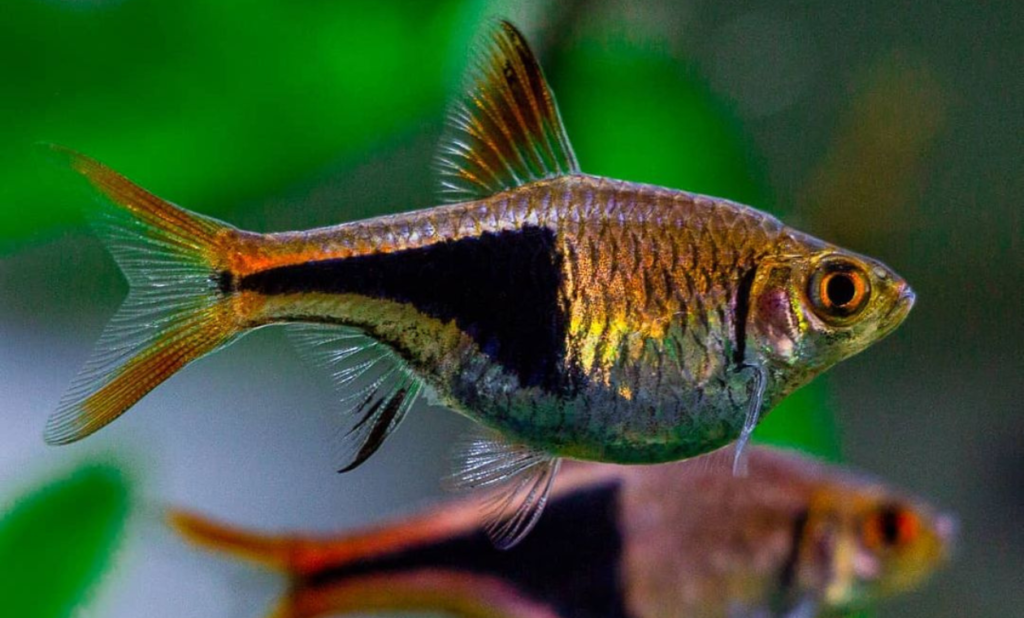Harlequin Rasbora Care Guide: Behavior & Maturity
Have you ever wanted a piece of nature in your home? A place where colors pop and peaceful creatures live? For me, Harlequin Rasboras turned my home into a peaceful oasis.
The moment I saw these fish, their bright colors caught my eye. It was as if they held a secret beauty. They were the ideal pals for my dream aquarium.
I learned everything about caring for Harlequin Rasboras. They needed a tank that felt like their natural home.
I built an aquarium with lots of plants. These plants made the tank look great and gave the fish a safe space. The plants moving in the water made everything feel calm.
But it wasn’t all about looks. I focused on the fish’s health and happiness. I was careful with the water and picked the right fish friends. I just wanted the best for them.
Key Takeaways:
- Harlequin Rasboras are peaceful freshwater fish known for their vibrant colors and peaceful nature.
- They thrive in schools and are perfect for planted aquariums.
- A tank of at least 10 gallons is recommended for a small school of Harlequin Rasboras.
- Proper filtration, live plants, and suitable tank mates contribute to their well-being.
- Harlequin Rasboras have an omnivorous diet and can live for 5 to 8 years with proper care.
Harlequin Rasbora Breeding and Behavior
Harlequin Rasboras are charming fish with a unique way of breeding. Learning about their breeding habits is useful for anyone looking to breed them.
Harlequin Rasboras lay eggs which can be bred in a different tank. Feeding them live food like daphnia and mosquito larvae helps them get ready to breed.
Both males and females have a black triangle on their body. The male’s marking is bigger and rounder, though.
“The male Harlequin Rasbora performs a dance to start spawning. He trembles in front of the female to lure her to a plant. There, she lays eggs upside down,” says breeder Nancy Wilson.
The male fertilizes the eggs once the female lays them. These eggs stick to the underside of wide leaves, like in their wild homes.
After the eggs hatch, the fry stick to the leaf for up to a day. They use the yolk sac for food. Then, they need very small food, like infusoria, to eat.
Sexual Maturity and Breeding Success
Harlequin Rasboras are ready to breed when they’re about six to nine months old. Successful breeding depends on making their environment feel like home.
Knowing how Harlequin Rasboras breed and taking the right steps can lead to witnessing their breeding success. It’s a rewarding experience.
Conclusion
The harlequin rasbora is a well-liked freshwater fish, famous for its eye-catching colors and peaceful nature. It’s vital to maintain the right water conditions for them. They do best in slightly acidic water, with a pH from 6.0 to 7.5. The ideal water hardness should be up to 12 dGH. They also like a temperature between 73 and 82 degrees Fahrenheit. This range is similar to their natural habitat.
Harlequin rasboras eat both plants and animals. They should be fed high-quality flakes or pellets, along with some live foods like brine shrimp and bloodworms. This mix helps keep them healthy and their colors bright.
Harlequin rasboras are small, growing to about 1.75 inches, perfect for smaller tanks. They are peaceful and fit well in community aquariums. They get along with many fish types, bringing beauty and life to tanks.
By keeping them in groups of 8 to 10, their natural schooling behavior is observed. This makes for a stunning aquarium view.
With the right care, harlequin rasboras can live between 5 and 8 years. Their active swimming and vivid colors are breathtaking. By keeping the water conditions right, feeding them well, and choosing compatible tank mates, you can give these gorgeous fish a happy home.

